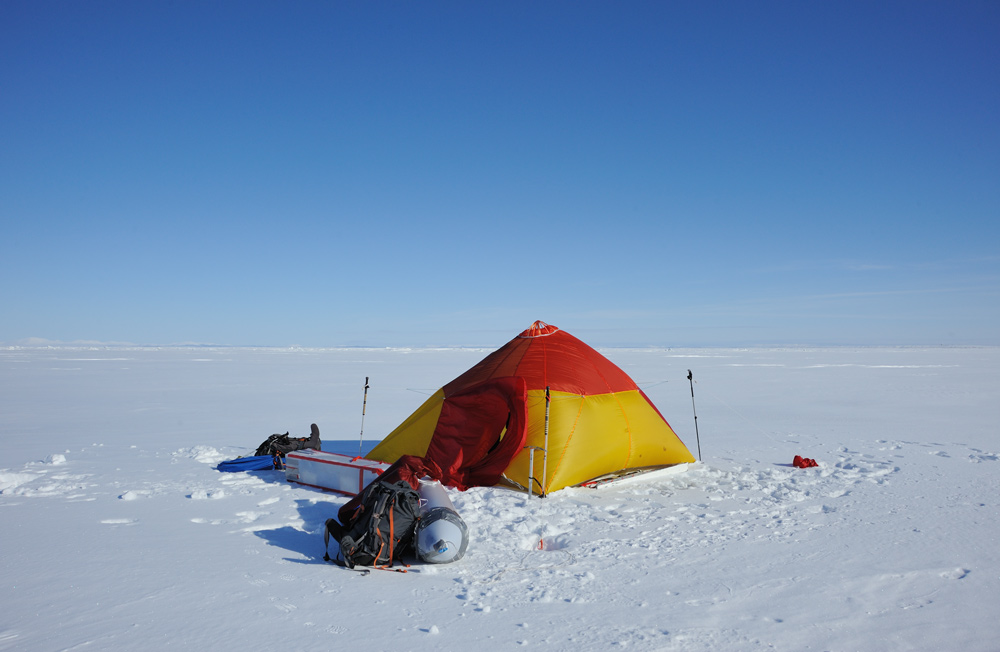
Two years ago we made an attempt to travel by ski on the Chukchi Sea and surrounding lands. It was not a successful attempt: We made 20 km on the ice of Kotzeboe Inlet, spent five days in snowstorms, and escaped back to Kotzeboe in a short break before another endless round of snowstorms.
We ran away but the dept was on us. This spring we decided to try again. So, we packed our backpacks and flew to Kotzeboe by an already familiar schedule.
Thus, the scene of action – Alaska, Bering Strait, Arctic Circle.
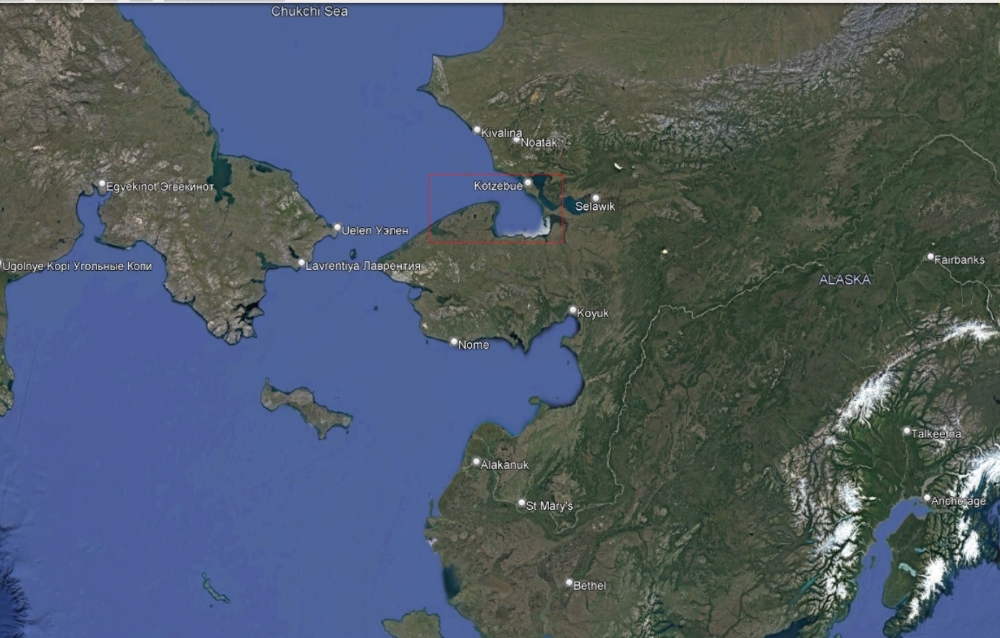
Our plan didn’t change from the last time – flight to Kotzebue, ski across the inlet, go the hot springs, and from springs to Shishmareff.
Same as last time, the plan didn’t work because of the weather and ice conditions. Spirits of Kotzboe don’t like us. At least, this time we actually moved, not only slept in snowstorms. Although, four days we gave to snowstorms again.
Map with the places of our plan and GPS track of our real actions.
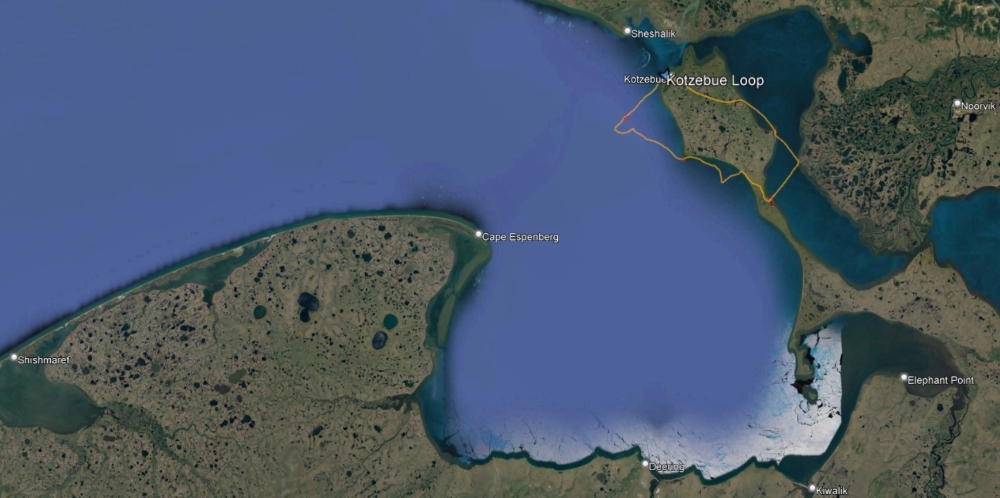
But, let’s start in order.
On March 27th we came to Kotzeboe. And in the last moment, we shifted our flight for two days, to avoid sitting in Kotzebue in a suddenly appeared snowstorm. The weather forecast works for Kotzeboe very bed.
In Seattle, we waited, while our plane was deiced. Deiced! In spring Seattle! it was definitely the sigh, but we ignored it.
In Cotzeboe the temperature was about -20C, windy, but not too bad to go. Despite global warming, the weather again didn’t want to fit in the statistical range of -5 -15C. We brought the white gas, repacked our sledges and backpacks, and started to ski just from the airport doors.

We started to move in the direction of Cape Espenberg. In the beginning, visibility was good, later OK, later not OK. I mean, visibility disappeared. The only way to orient was azimuth. Check the direction, make fifty steps, correct the direction, and repeat. Exhaustable way to move, and not fast. After the 14th km, we were tired, and the sun was already low (we started quite late). So, we set the tent and lay down.
In the morning we woke up under the sound of a snow blizzard. Surprise. Even fresh weather forecasts didn’t promise this. Our new travel started the same way as the previous one. Ground Hod Day. March 28th we spent in the snowstorm. March 29th we also spent in the snowstorm. If you are in Cotzeboe – be ready for a snowstorm. Tradition.
On March 30, in the middle of the day, visibility became not too poor. We parked and started to move. The wind was strong but irresistible. In the beginning under our feet, we had almost flat ice, covered with thin packed snow. After some kilometres, flat ice was replaced with sastrugi, which were replaced with big sastrugi, which were replaced with huge ice piles. Finally, it was one huge ice pile field. Between ice piles black open water was clearly visible. Also, there were ponds of water above the ice, partly covered with snow. So, it became impossible to continue movement in the same straight direction.
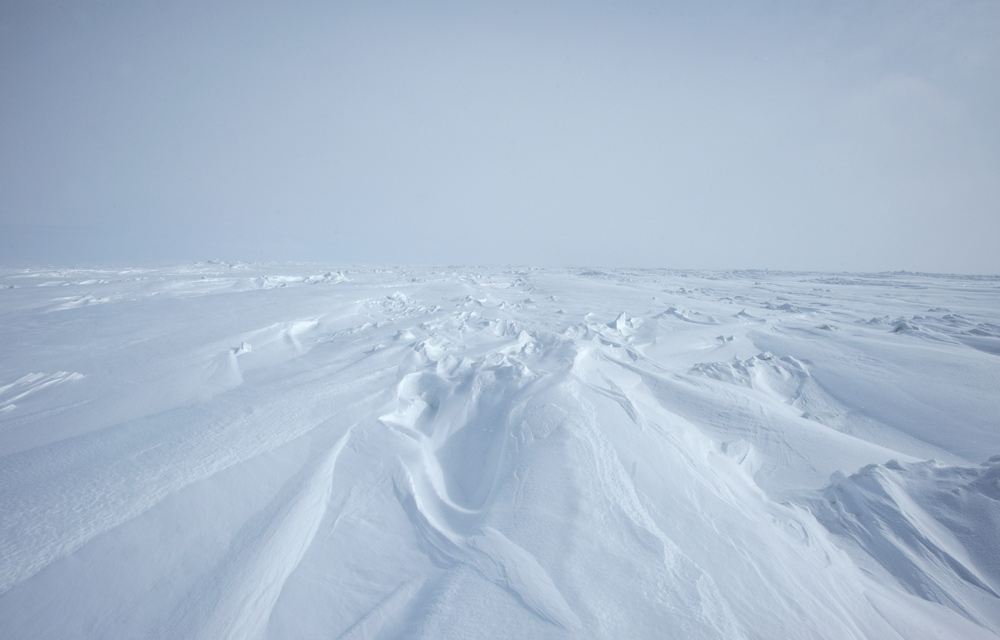
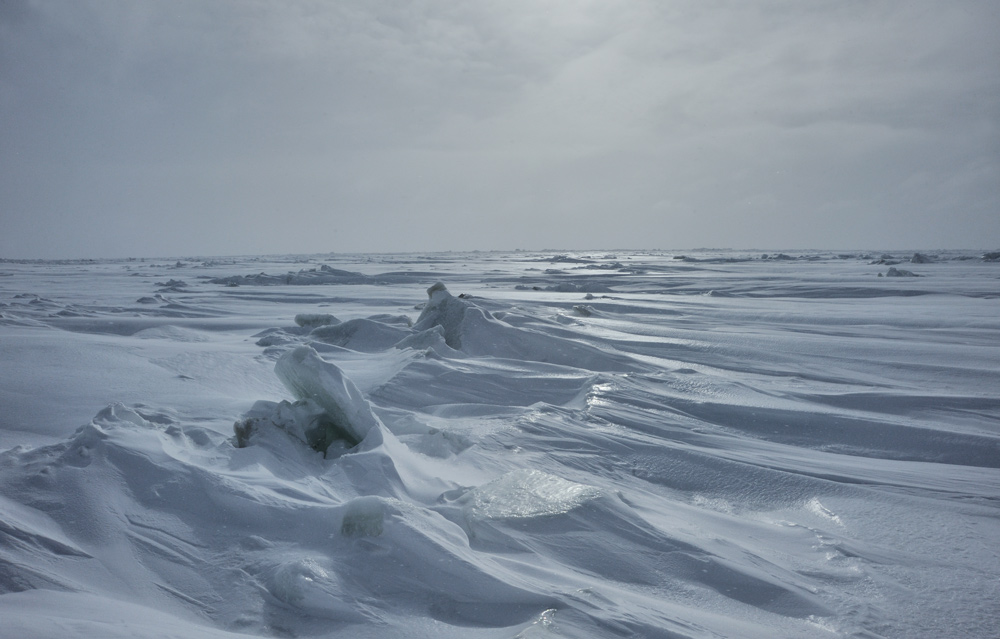
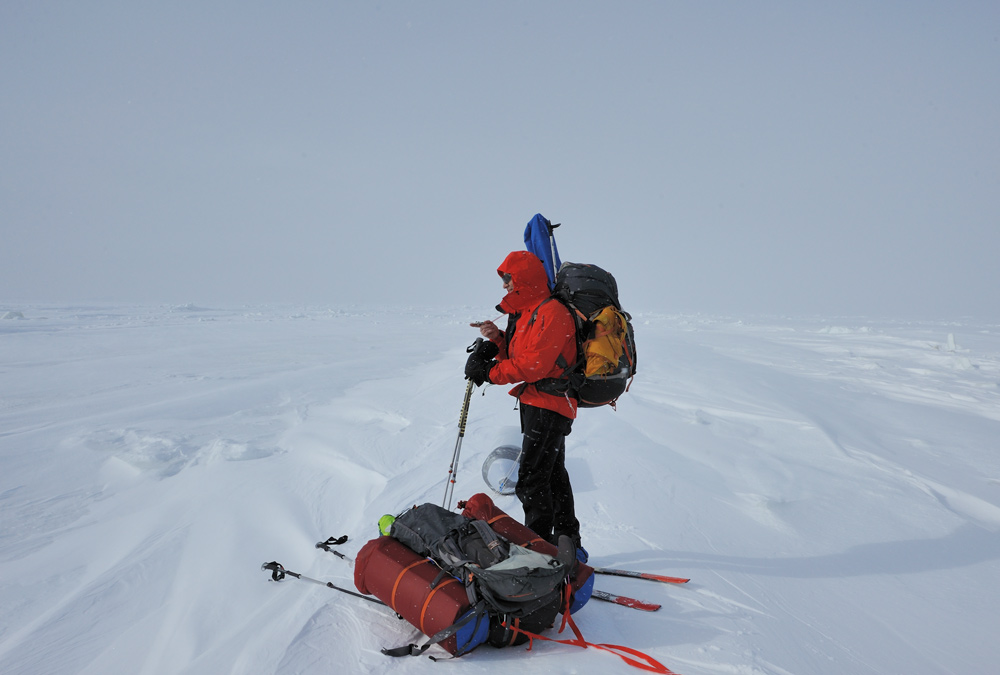

So, we changed direction, and went to the south, bearing to the coat until we returned back to the flat ice.
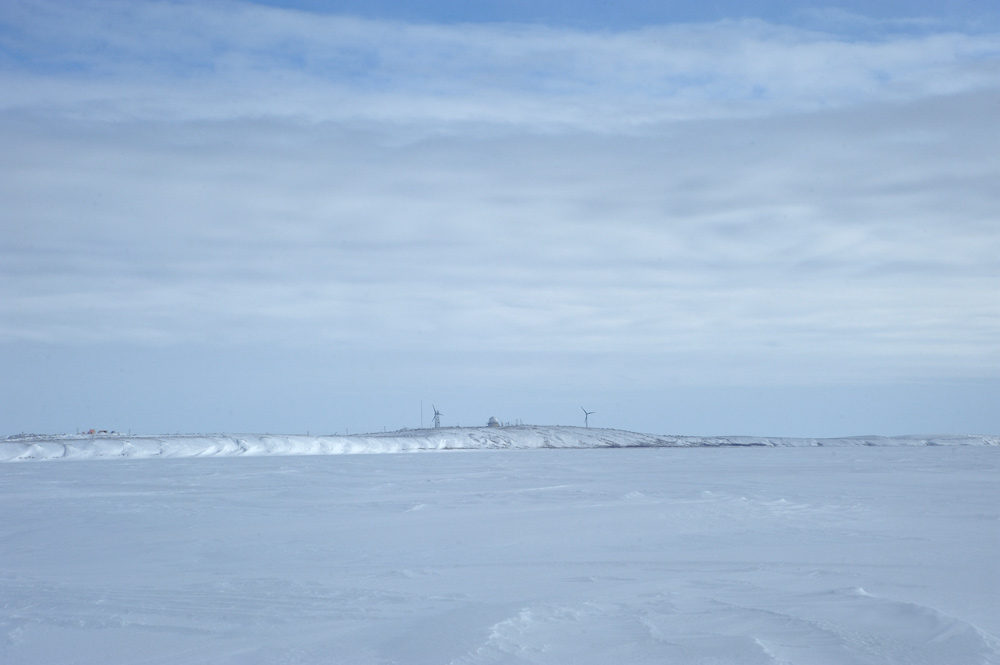
While we went through ice piles, one of my skis lost its skin, and another started to do the same. I should say, that we glued our skis with really strong glue, not with standard glue for skins, because the last one doesn’t work at such long expeditions (and we checked it on Svalbard). Usually, people used screws or wire, but Peer decided to check glue. It was fine till we skied on flat surfaces, but ice piles bend the ski, and it became critical. So, now only wire!
Well, this trip was unusually traumatic for equipment – skis, boots, poles, and other stuff. Fortunately, nothing too dramatic.
So, we skied closer to the coast and set the tent. Ice was wet, saturated with salt water, and very dense and heavy. It was very difficult to set ice screws, and in the morning, when we screwed them up, they were clogged with ice.
March 31 was cold and clear. It was windy, and the wind became stronger and stronger during the day. We moved to the south along the ice pile field, trying to find the way through the inlet. But it was impossible; except narrow passage along the coat, the inlet was under ice piles with open water pools.
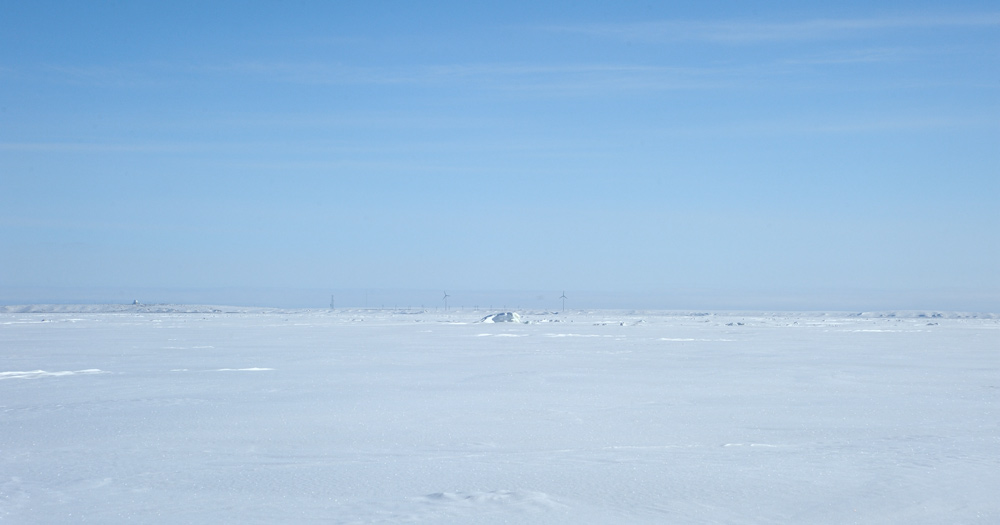
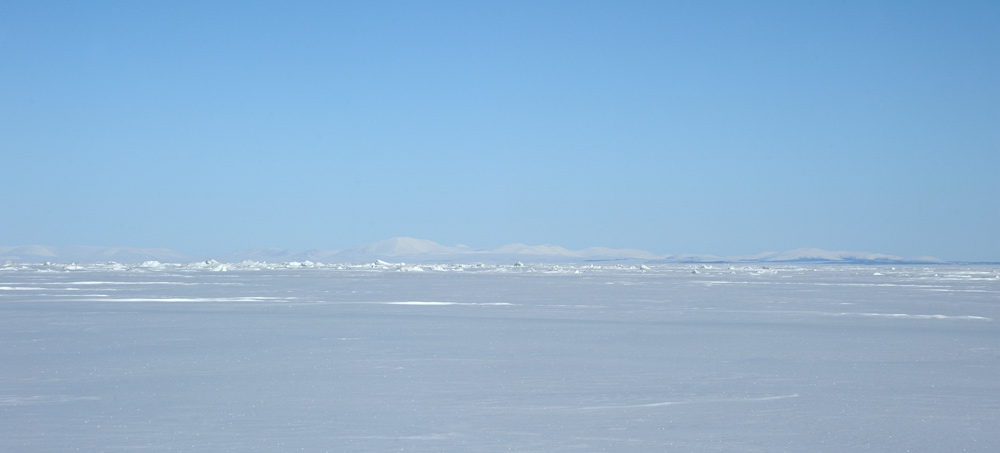
We reached Cape Blossom (bare rocks) and decided to set the camp.

The ice crews were clogged with ice and didn’t work. Fortunately, we had the thermos with broth. In general, we had two thermoses. One we used to make tea. At such temperatures, making tea in a pot is useless, it transforms into ice before you drink it. For a day we made two thermoses: one with tea, and another with broth. And made two pit stops. This day was so cold and windy, that we stopped only once, and saved the broth. It was our lunch. We defrosted ice screws in the broth. Late we re-warm ice-screw broth and used it to make rice soup. Very hearty. Much better that the sour from the axe.
The snowstorm started early morning. And continued for two days. As we used. We noted that tea and food had a weird taste. I started to worry, but realized, that we stay on wet salty ice, and thin snow on this ice is also wet and salty. Sea water is not tasty, but we didn’t have variants. Altogether, salty wet ice is a very unpleasant thing. It is not hygroscopic, snow doesn’t absorb moisture, and everything quickly becomes wet and cold. After two days of snowstorms, we had a puddle under the sleeping system.
On April 6 the snowstorm ended.
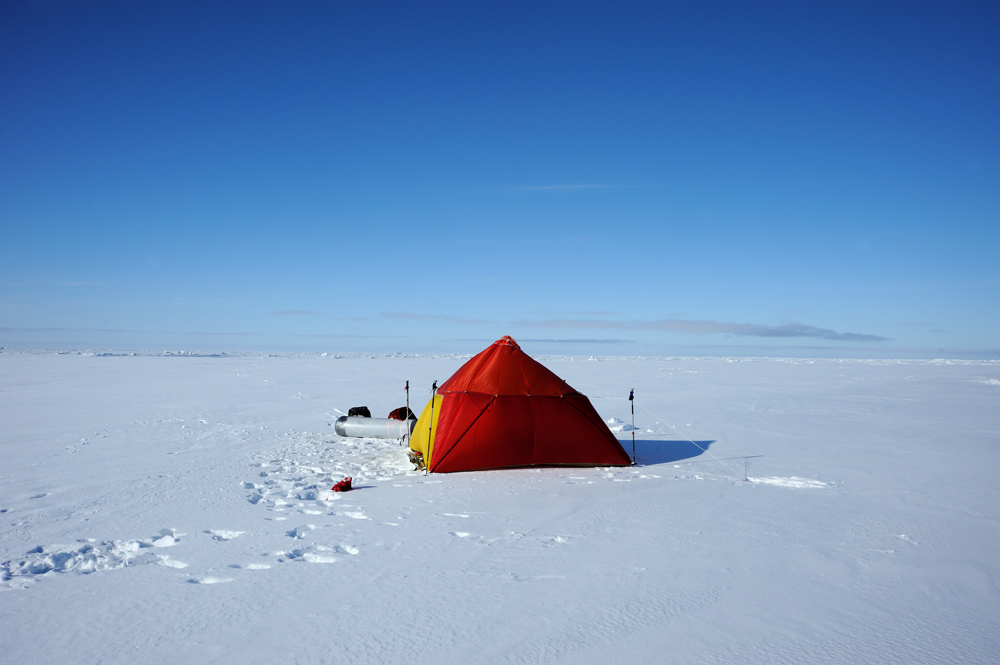
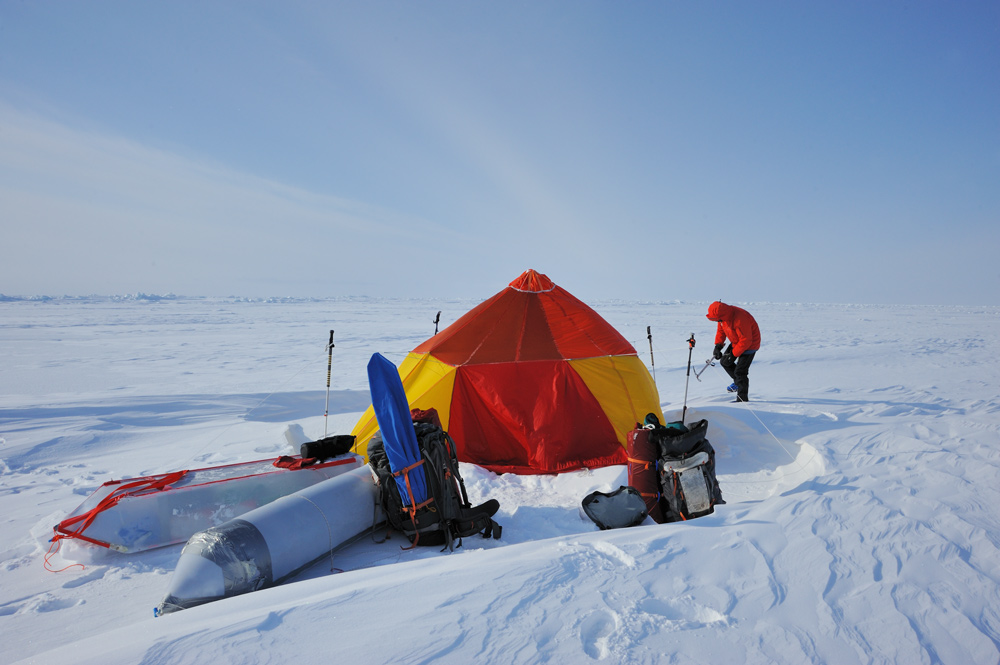
And we went further. Still cold and windy. Spent some time defrosting the ice screws to prepare them ahead for the evening tent set. Moved along an ice pile field near Cape Blossom. Tried to find the pass through ice piles and open water, but without success. Spent another night on the wet ice. it was a very cold night.
We completely ensured that we could not cross the inlet because of the ice condition and we should revise our plans. For now, we started to move in the coast direction. Staying on the ice didn’t have sense anymore.